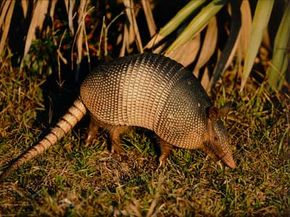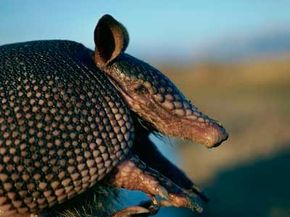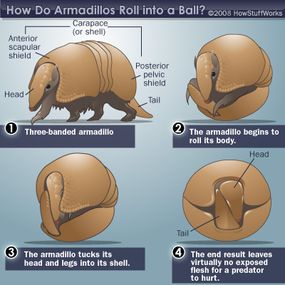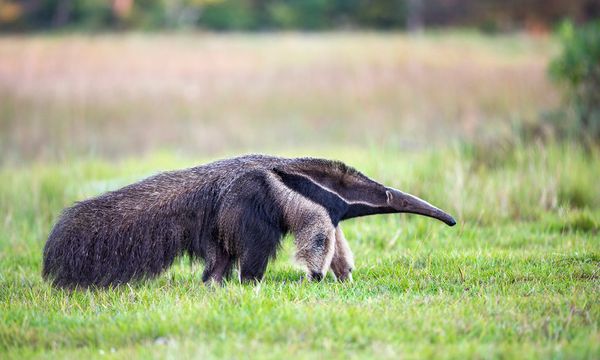Whether you're speaking English or Spanish, you call an armadillo an "armadillo." Originally native to South America, the mammal's name literally means "little armored one." Take a look at an armadillo, and the moniker certainly fits. Its unique outer shell looks like a primitive suit of armor that covers the animal from the top of its head to the tip of its tail. Ranging as far north as Nebraska and west into central Texas, the armadillo crossed over into North America around 150 years ago [source: The Humane Society of the United States].
But that doesn't mean the armadillo is a newcomer to the animal kingdom. While you'll only find one species -- the nine-banded armadillo -- in the United States, the first armadillo ancestors reached South America around 100 million years ago [source: Lumpkin]. Today, 20 species of various shapes and sizes live in Brazil, Bolivia, Paraguay and Argentina.
Advertisement
If you think an armadillo looks strange, consider the rest of its oddball relatives. Armadillos are part of the Xenarthra family, along with sloths and anteaters. The family name refers to the distinctions in the animals' vertebrae that give them added support for their hips [source: Nowak and Walker]. That aids the anteaters and armadillos with their burrowing habits, although not all armadillos are adept diggers. The group also has a difficult time maintaining body temperature, which restricts their habitats to warmer climates. Armadillos, for instance, will usually resort to co-habitation only when the thermometer dips to around freezing. Eyesight isn't their strong suit either; they rely more heavily on smell through their piggish snout to orient themselves and find food.
Because armadillos can't accumulate much body fat, they spend much of their time foraging. A majority of the armadillo diet consists of insect matter, with some vegetation tossed in occasionally. When they're rooting around for dinner, though, that may put them in an enemy's line of sight. If danger strikes, how does an armadillo react?
Advertisement




